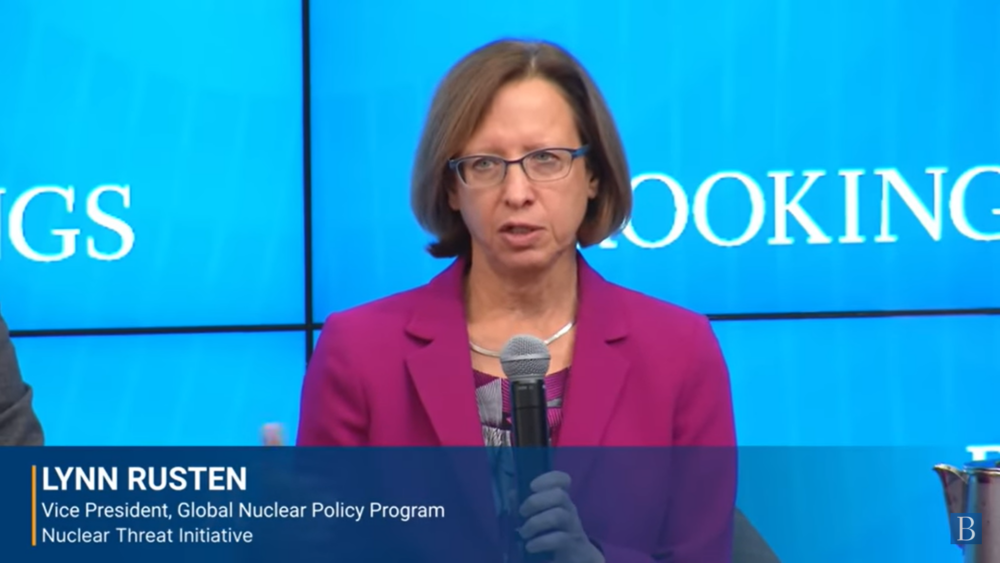
NTI’s Lynn Rusten on Defense Department’s New Strategy for Countering Weapons of Mass Destruction
The DoD’s new CWMD strategy, last updated in 2014, comes at a time when longstanding norms against nuclear use are being tested.
Dangerous Gap Between Pace of Work and Urgency of Nuclear Threat; Progress Has Been Made, But Current Programs Not Moving as Fast as They Can or Must, New Analysis Finds
While progress has been made in securing vulnerable nuclear material stockpiles around the world, there remains a dangerous gap between the pace of progress and the scope and urgency of the threat, according to new analysis by Matthew Bunn of Harvard University released today by the Nuclear Threat Initiative (NTI). Only 41 percent of Russia’s nuclear materials have received U.S.-funded “rapid” security upgrades or more comprehensive upgrades to date, according to official data cited in the paper released today.
“We have the technology it takes to secure these materials. What we need is a sustained high-level push to accelerate this effort,” said Mr. Bunn, who will appear at New England College in Henniker, New Hampshire tonight with former Senator Sam Nunn and General Eugene Habiger (USAF, Ret.) as part of NTI’s “Act Now for a Safer World” public awareness campaign.
“Homeland security begins abroad – wherever unsecured nuclear materials exist. The most effective way to keep nuclear weapons out of the hands of terrorists is to secure them at the source,” said former Senator Nunn, who chaired the Senate Armed Services Committee and is co-chairman of NTI. “We know where these dangerous weapons and materials are. We need to work more effectively with other nations to lock down and destroy them before terrorists get to them.”
The paper outlines the continuing nuclear threat, summarizes the progress made in the last year and the gaps that remain, and recommends steps to close the gap between the threat and the response. According to the analysis, three elements are essential in reducing these threats:
“It is critical that we work with other nations to reduce these threats. This is not a challenge that one country can meet alone,” said General Habiger, former Commander in Chief of the U.S. Strategic Command, responsible for all U.S. Air Force and U.S. Navy strategic nuclear forces, and a member of the NTI Board of Directors.
“There is no question that these weapons are the greatest threat we face,” said former Senator Warren Rudman of New Hampshire, a supporter of the Safer World campaign. “If we don’t get this right, nothing else matters.”
According to the new analysis, there are both positive and dangerous trends underway. The paper illustrates several key dangers, including the fact that terrorists are working to get a nuclear bomb; that if terrorists could steal, buy or make a nuclear bomb, there can be little confidence that the U.S. government could stop them from smuggling it into the United States; and that such a crude terrorist bomb would potentially be capable of incinerating the heart of any U.S. city, turning it into a modern Hiroshima. The paper also cites the first documented case of theft involving the senior management of a facility that handles nuclear weapons-usable materials.
A copy of the full analysis can be found at www.saferworld.org. The Safer World campaign is a nonpartisan public awareness campaign designed to elevate this key national security issue and make it a higher priority for elected officials and policy makers. A distinguished, bipartisan group of leaders is supporting the Safer World agenda, including former Senators Sam Nunn and Warren Rudman, General Eugene Habiger, CNN founder Ted Turner, U.S. Senator Richard Lugar, U.S. Senator Pete Domenici, former U.S. Secretary of Defense William Perry, U.S.-Russian expert Susan Eisenhower, and Jessica Mathews, president of the Carnegie Endowment for International Peace, as well as other American and international leaders.
The paper was co-published and funded by NTI and authored by Matthew Bunn at the Project on Managing the Atom (MTA) based at the Belfer Center for Science and International Affairs at Harvard University’s Kennedy School of Government. For more information, visit https://belfercenter.ksg.harvard.edu/project/3/managing_the_atom.html. NTI is a public charity working to reduce the global threats from nuclear, biological and chemical weapons.
###
Sign up for our newsletter to get the latest on nuclear and biological threats.
The DoD’s new CWMD strategy, last updated in 2014, comes at a time when longstanding norms against nuclear use are being tested.
The paper highlights the need for renewed attention to the catastrophic effects of nuclear conflict as a crucial step toward reducing the risk of nuclear use.
A new report from NTI highlights the critical need for a global diplomatic approach to address growing cyber risks, including, where possible, through cooperation between the United States and Russia.

